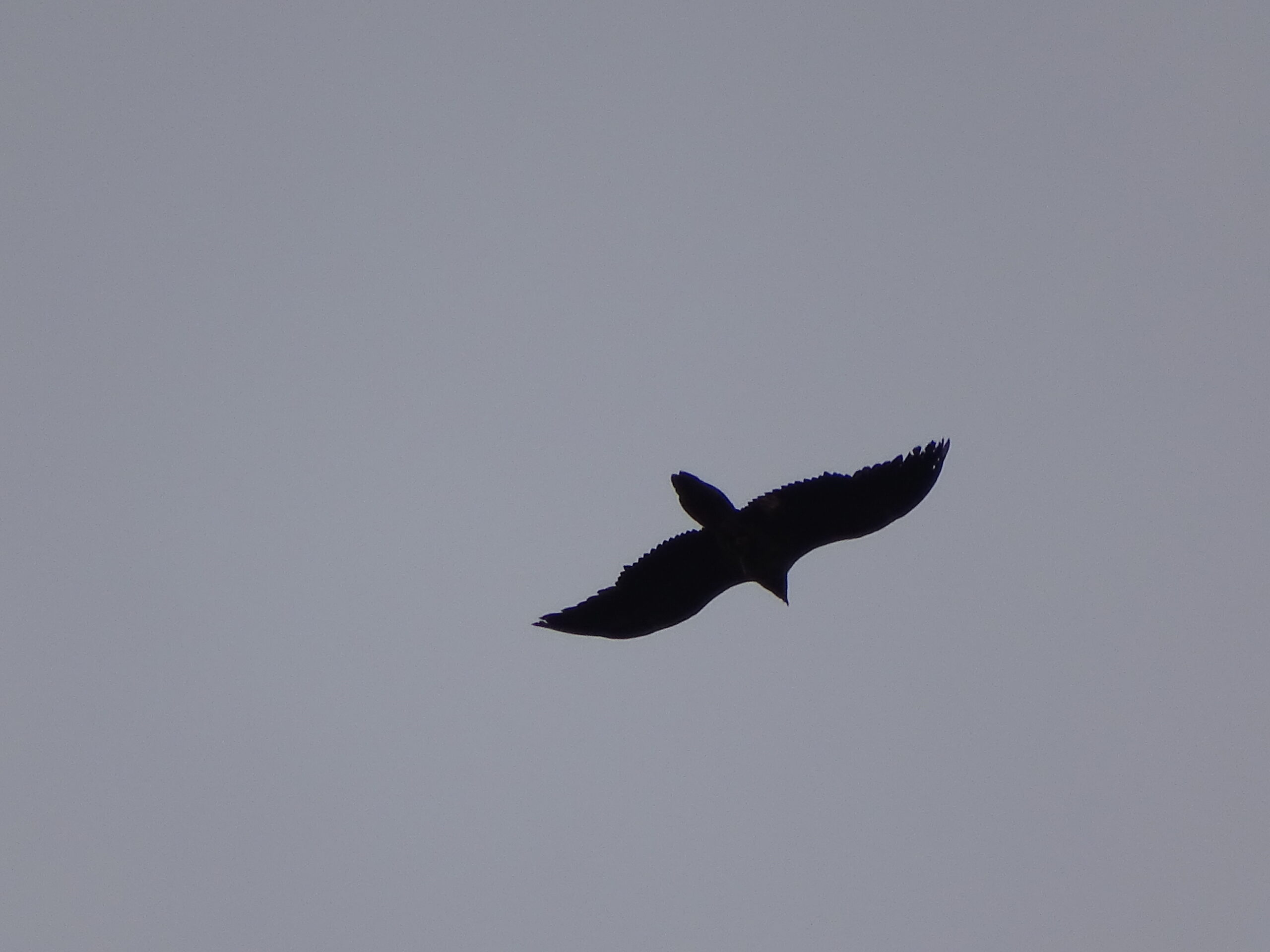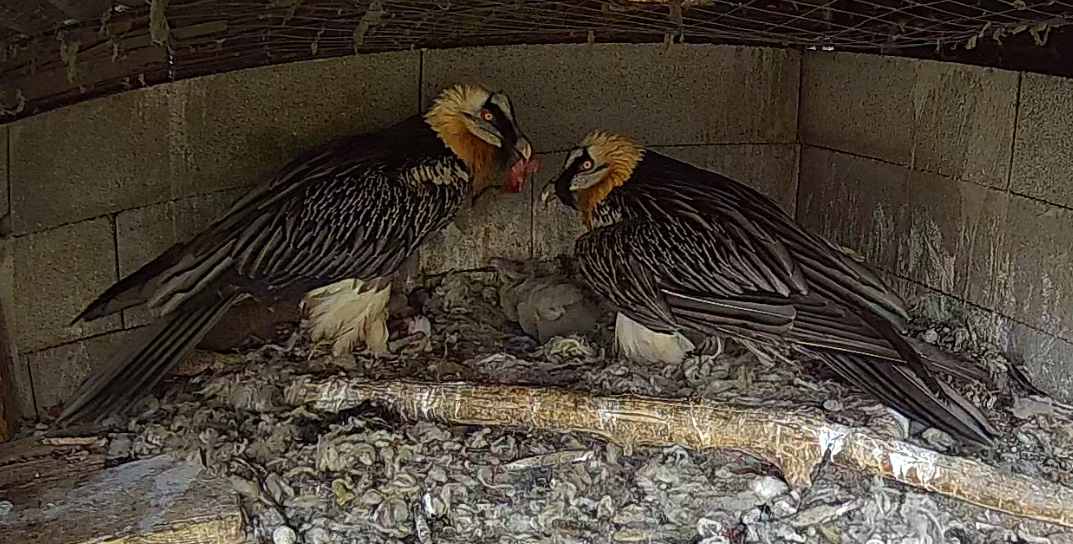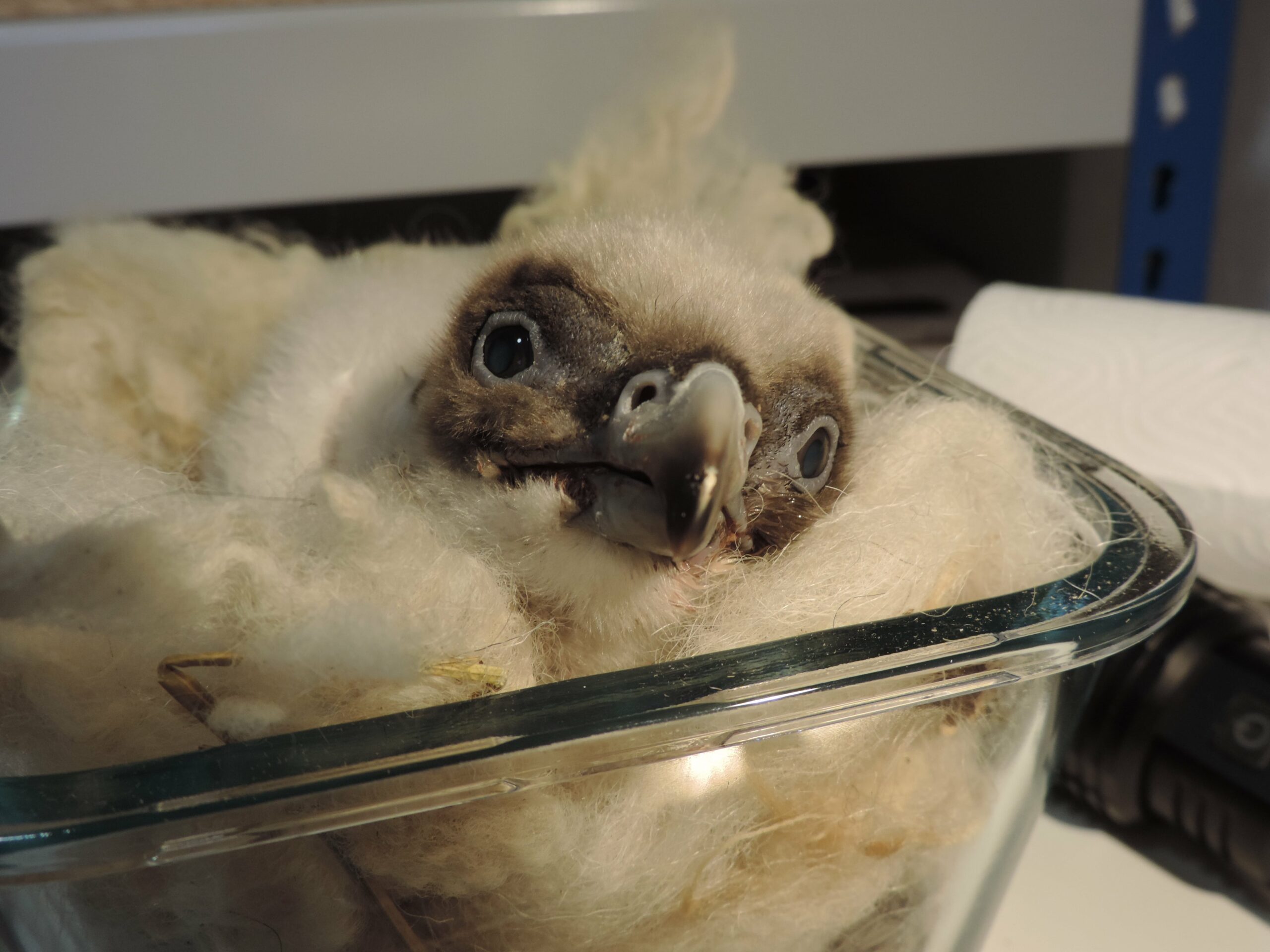
The Bearded Vulture disappeared from the skies of Picos de Europa National Park in Northern Spain during the mid-20th century. Thanks to a reintroduction project, the species returned to the park, and in March, a Bearded Vulture chick hatched in Picos de Europa for the first time since the species was declared extinct in 1956. After month in the care of its parents, the vulture successfully fledged and is now exploring the area!
First Bearded Vulture fledgling in decades
A Bearded Vulture has not hatched at the Picos de Europa for decades, until this year. The technicians from Fundación para la Conservación del Quebrantahuesos (FCQ) and guards from Parque Nacional de los Picos de Europa have been closely monitoring the development of the chick, named Bienvenida (Welcome), which hatched in March to Deva and Casanova, a pair formed in 2014.
Deva is a 10-year-old female reintroduced to Picos in 2010 and Casanova is a male of at least 13 years of age who arrived from the Pyrenees and settled in Picos de Europa in 2013. Their breeding success of this year comes after several failed attempts. In the autumn, FCQ staff and park rangers observed pre-breeding behaviour: defence of the territory, repeated copulations and nest building. In January, the observers noticed that the pair laid a clutch and begun sharing their incubation responsibilities. The couple had been incubating for 54 days inside the nest at the Asturian part of the central massif of the Picos de Europa. In the middle of March, technicians realised that a chick hatched due to the behaviour change of both parents, who among other things, started feeding their young.
In June, conservationists attempted to install a GPS tag on Bienvenida, but their efforts were thwarted by the chick’s very active behaviour.
After 140 days in the care of her parents, Bienvenida left the nest and took her first flights. Thanks to some feathers found beneath the nest, FCQ experts and specialist vets determined with DNA analysis that the bird is female. During the next four months, and as is usual in this species, Bienvenida will explore the surrounding areas of her birthplace and will continue to receive food support and protection from her parents, Deva and Casanova.
A significant milestone for the species’ future in Spain
The hatching and fledgling in the Picos de Europa, which is 400 kilometres away from the Pyrenees, is a significant step for the survival of the species in Spain. In total, there are around 26 Bearded Vultures currently flying over Picos de Europe. This is thanks to a Bearded Vulture Reintroduction Programme that began a decade ago, aiming to achieve a stable population in this area, which would mean a meta-population that would favour the connection of the species with the Pyrenean population. The birds released come from the Pyrenees, with the support of the Gobierno de Aragon, which is home to the largest Bearded Vulture population in Europe. Since the releases, about 69% of the birds have survived, with losses attributed to both natural causes, as well as poisoning and electrocution. Expanding the distribution area of the species is vital as it will boost their population and reduce the risk of extinction. With Bienvenida, the Picos de Europa becomes the third breeding population of the species in Spain after the Pyrenees and Cazorla (the latter is also as a result of reintroduction efforts).
Congratulations to the efforts of all stakeholders involved, which led to the first Bearded Vulture fledgling in Picos de Europa since the extinction of the species. We wish Bienvenida a long future ahead in the wild!
Source: FCQ






